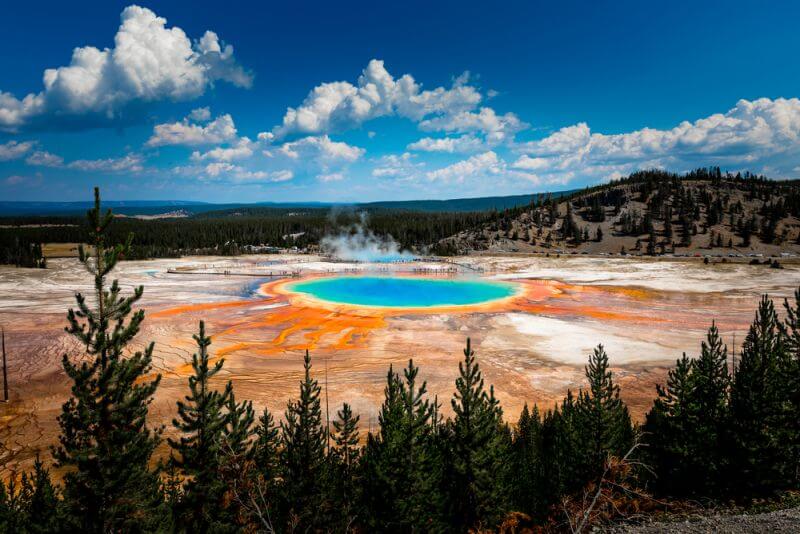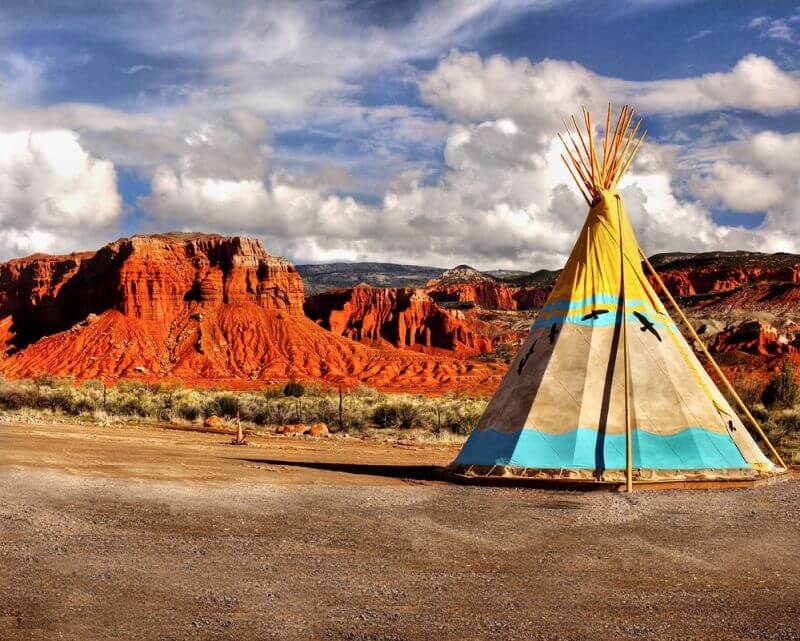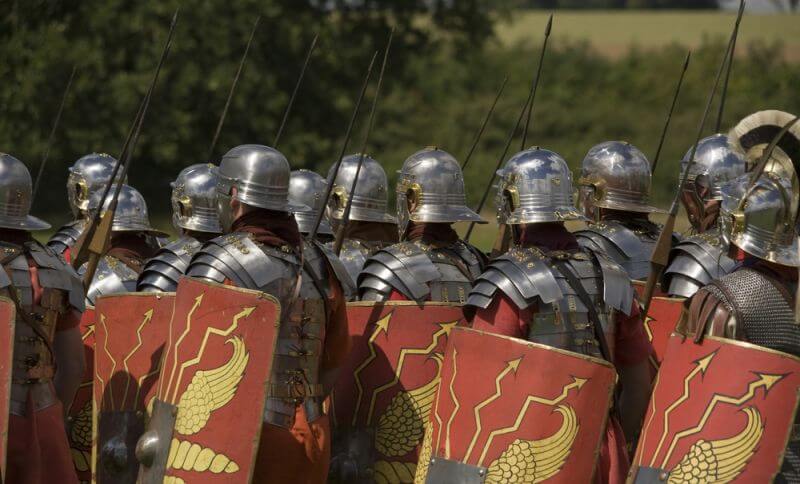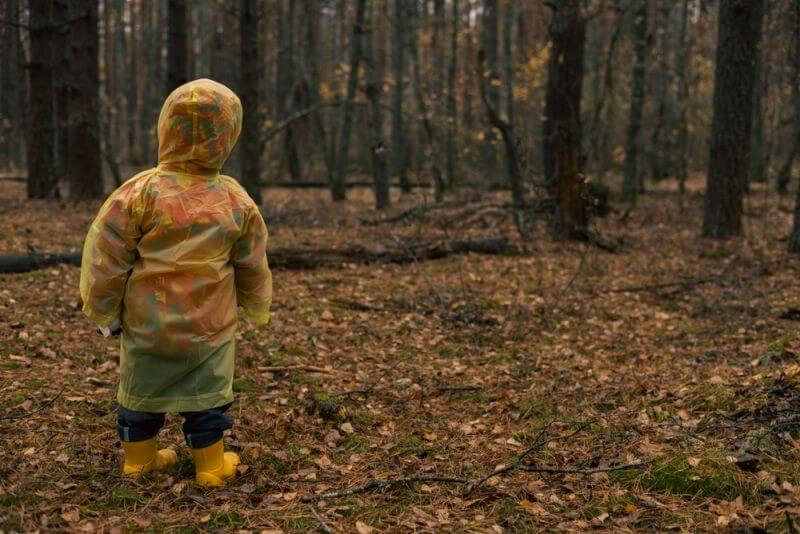This last week saw the Kilauea volcano erupt in Hawaii. That’s not all that unusual an occurrence, as the Hawaiian Islands are volcanic in nature. That’s actually not unusual, as their 15 volcanoes have eruptions on the average of every two to three years. That’s only a small percentage of the approximately 1,350 potentially active volcanoes in the world, any of which could erupt at any time. The highest concentration of these volcanoes is along the Ring of Fire, located along the Pacific Rim.
Of those 1,350 volcanoes, about 20 are considered to be “super-volcanoes,” even though such a scientific identification doesn’t exist. These massive volcanoes have the potential of creating massive weather shifts, due to the large volume of ash they belch into the upper atmosphere. That ash can block sunlight, preventing it from reaching the earth’s surface. Forming a band higher than the clouds, it is impervious to the rain below it, which would otherwise wash it out of the atmosphere.
Here in the United States, we have at least three super-volcanoes, including the Yellowstone Caldera. Should one of these erupt, the potential impact would be enormous. Not only could we count on the direct damage from the lava flow; but also a layer of ash covering a large part of the United States and an ash cloud blocking much of the normal sunlight for the next year or more.
Modern scientific volcanology has developed the means to monitor volcanoes, giving warning as to when eruptions are eminent. This has greatly reduced the number of people who are killed by such eruptions; but not the amount of damage caused or the aftereffects of major eruptions; an impact that can last for several years.
These scientists make predictions on which volcanoes are expected to be active in the coming years. For 2025, they are predicting that an underwater volcano, roughly 300 miles off the Oregon coast, named the Axial seamount will erupt. As it is deep underwater, we will probably see little impact from the eruption. Scientists, including those at the USGS (US Geological Survey) are also predicting that Mount St. Helens will erupt again, sometime in the next few years. Likewise, there is a risk of Mount Rainier, Mount Baker, and Glacier Peak erupting sometime soon.
Direct Damage from Volcanoes
The image most people have of volcanoes is molten lava spewing up hundreds of feet into the air. A dense cloud rises from there and rivers of lave flow across the ground. Anything in that lava’s path ignites into flames, totally burning before the weight of the lava flow crushes those structures.
While that direct devastation from lava has the potential of destroying entire cities, there is little chance of that happening. Mankind’s long history with volcanoes has taught us to avoid building too close to them. That’s not to say that nobody ever builds on the side of a volcano, as can be seen by the squatters living on the sides of Mt. Vesuvius, the volcano that destroyed ancient Pompeii. Should Mt. Vesuvius erupt again, which isn’t likely for the next couple of hundred years, those people might not make it out in time.
There is no defense from the lava that volcanoes spew forth, other than to make sure that we’re outside of the range of falling lava and of the lava flows. As long as we do that, we can sit back and enjoy the fireworks, if that’s what we want to do.
Falling Ash
The other direct impact from a volcanic eruption is falling ash. Any volcano is going to throw ash into the atmosphere. Just how much it throws can vary extensively from one eruption to the next, even from the same volcano.
Some of that ash is going to be blown high, into the upper atmosphere, where it will travel around the world. But an even larger amount of it will begin to fall almost immediately. As the prevailing winds push the ash away from the volcano, it will cover a larger and larger area, with the depth of ash falling becoming less and less, the farther it travels from its origin. That ash can disrupt infrastructure, contaminate water sources and kill vegetation, whether naturally occurring or farmlands. It can even kill people.
In the case of the Yellowstone super-volcano, an eruption would likely result in ash falling as far away as the mount of the Mississippi River, as far north as the Canadian border and even hitting Southern California. A large part of the American Breadbasket would be covered in ash, ranging from mere millimeters at the farthest extent, to over three feet in Wyoming, Southeast Montana and the lower part of Idaho.
The lives of people living within 500 miles of the eruption would be at risk, with few surviving. Farther out, the chances of survival will be greater; but extraordinary measures will need to be taken to prevent inhaling the ash. Breathing in that ash can cause a number of respiratory disorders, including lung cancer.
The destruction of crops on such a large scale could have a global impact; but not as much of an impact as in years past. While we are still a major exporter of grains, especially wheat, Ukraine and Russia have taken the lead as the world’s top exporters. Food prices would likely rise, but there shouldn’t be major shortages.
Ash in the Atmosphere
Over the long term, the biggest danger from the eruption of Yellowstone, or any of the other super-volcanoes, isn’t the immediate damage that they could cause; but rather the ash that would remain in the upper atmosphere, blanketing the earth and blocking sunlight.
Such events have happened before, most notably the eruption of Mount Tambora, in Indonesia, which happened in 1815. This particular eruption threw enough volcanic ash into the upper atmosphere, that the year following it, 1916, is known as “The Year Without a Summer.” An estimated minimum of 100,000 people died due to the loss of sunlight and resulting impact on farming. A similar event happened in 536 AD. While there is little historic evidence to work with about either of these events, the climatic changes caused by ash in the upper atmosphere make the “climate change” scare of 2°C seem insignificant.
Climatic changes from that event reduced temperatures to the point where there were areas, such as New England, experiencing snowfall in the summertime. That much of a temperature shift would have a drastic impact on agriculture, as all plants have a “growing zone” of temperature in which they thrive. A drop of average temperature exceeding 30°F or 40°F would pretty much destroy most crops on its own. Add to that a reduction of sunlight, which is essential to crop growth, and you can pretty much say that there would be little to no harvest for that year.
Surviving the Aftermath
Such an eruption would be a true TEOTWAWKI event. The biggest problem would be the loss of agriculture; an effect that would take time to manifest. While Ukraine and Russia could make up for the loss of US wheat production in the near-term, that wouldn’t help the next year, when the ash had dissipated around the globe, lowing temperatures worldwide.
This makes the biggest danger from such a massive eruption starvation. The Mt. Tambora eruption in 1815 caused severe famine for more than a year afterwards. On top of that, a cholera outbreak that had started before the eruption turned into a full-scale pandemic, killing millions.
Here is where we run the risk, as preppers. More than anything, we are defined by the act of stockpiling food. But just how much food should we stockpile? Few of us have a year’s worth of food in our homes and that’s about the farthest out that any of us plan. The general idea is that we will use that year to get our food production going, so that we can continue to feed ourselves after the year is over. However, in the case of such an eruption, that year’s worth of food won’t be enough! We will run out, before we have the necessary sunlight to start growing food effectively.
I’ve given this considerable thought and I believe there are still things we can do to survive. It will take extreme measures; but that’s better than just giving up and dying.
Basically, we will need an alternate way of growing food. That either means growing food in our basements (assuming we have basements) or underground greenhouses. These underground greenhouses aren’t fully buried; but rather half-buried, with the tops exposed. The ground acts as an insulator for the lower part. There are preppers living in Nebraska, who are growing citrus trees, year-round, in Nebraska, of all places.
Our two problems to overcome in doing this are heat and light. The heat can come from geothermal heating. If we dig down eight feet, we will be below the frost line, large pipes or tubes (4” to 8” in diameter) run at that depth can be used to gather heat, blowing air from our greenhouse through the tubes and back into the greenhouse. The ground’s temperature at that depth remains at a consistent 52°F, warm enough for growing.
We’re going to have to provide artificial lighting for the plants to grow, which means that we’ll need a reliable source of electricity. Solar power won’t work, as there probably won’t be enough sunlight available. However, if there is some sunlight, we could string solar panels together in series (normally the panels are connected in parallel), adding their output voltage. Our other option is to use wind power, which will probably be just as active, after the eruption. A good wind turbine or two, connected to a decent sized battery bank, should provide enough electricity to run our grow lights, especially if we use LED grow lights.
As with any other gardening effort in limited space, we’re going to have to make the best use of the space we have available, using vertical gardening, hanging pots, and every other device we can to put the most possible plants in the available area.
Water might be a problem as well. While I’m pretty sure that it will still be raining, the rainwater might be contaminated by ash. But this is something we know how to deal with, purifying our own water. Just make sure you have enough filters on hand, if you’re planning on using any sort of mechanical filtering.










Frank C | March 18, 2025
|
Interesting, Clarification of an overlooked problem, that has been an ongoing threat. That threat comes from “Mother Nature” herself.
Question, In the section you labeled “Ash in the Atmosphere;” you’ve stated ‘Mount Tambora, in Indonesia, which happened in 1815″ and
“the year following it, 1916, is known as “The Year Without a Summer.” So, here’s the question: which is it, a year or 101 years? Typo?
You also forgot Earthquakes, caused by land-based Volcanoes, and Tidal waves caused by sea-based volcanoes. Remember what
happened to Japan a few years back.
Travelin On | April 1, 2025
|
Mt Tambora erupted between 1815 and 1818. The time frame of a year without a summer would be one year, not 101 years. A very good point made about the earthquakes that often occur around volcanic activity, and when occurring in the sea, the tsunami’s can have huge effects, especially from people who refuse to take a tsunami warning seriously and want to be on the spot to see what happens. People make their choices and most often that determines the consequences.
Also after Mt. St Helens erupted on May 18, 1980, in WA state, yes, there was lots of concern about the ash falling, would be poisonous, toxic, etc. It did cause respiratory problems such as asthma for those susceptible to it, people had to wear masks. My father and several others I knew in the area really suffered from asthma as a result of the falling ash, but it didn’t stop crops from growing or being harvested that year. In the wheat basket portion eastern Washington where I lived during that time of my life, the great increase of harvest production greatly multiplied for the next several years. I find it interesting the predicted devastation that is indicated when one of these super volcanos erupts with no good or positive effects cited. Yet, when reading about, and having lived in eastern WA when St. Helens erupted, I’ve yet to read about an eruption that didn’t have some real positive effects somewhere, to to tell the whole story, the positive effects of natural occurrences (that many call disasters) needs also to be stated. Yes, they do change weather patterns, but we’ve come to learn to live with them. For a few years living in the wheat basket of eastern WA, we had more moisture and it was lovely. The next super volcano that erupted a few years later on the other side of the Pacific changed the weather patterns back to what we had been accustomed to before and those weather patterns have seemed to remain. There was lots of clean up required and it did freeze up and ruin several vehicles, including Washing State Patrol vehicles in the middle of no where and others had to rescue those who were stranded. There was no huge issue made during that time of the people who lost their lives. Everyone knew the mountain was going to erupt and people made their choices about whether to remain in their homes or evacuate. Some chose to stay where they were, they chose not to remain living if their beloved mountain altered. Others evacuated and they’ve been able to find new homes and continue their lives. Surviving is far more about adaptability than it is about how mother nature behaves.
Jacquie | April 2, 2025
|
Thank you for clearing up some of the “stories” concerning MSH! I lived on the South West side of MSH. Was a tourist information person at the Woodland, WA Tourist Information Center at the Chamber of Commerce. The concern on the south side of MSH was the three lakes; Swift Reservoir, at the base of MSH, where glacial and snow melt almost overwhelmed the lake. The other two lakes, It was feared, if Swift Reservoir collapsed, it would cause a devastating flood. Flooding of the area south and west of the mountain. affecting commercial traffic on the Columbia River, Vancouver, WA and Portland, OR.
Yes, the ASH very slippery when wet but as it circled the earth it left behind a natural fertilizer! It was a surprising and awesome experience to have survived! The re-growth in twenty years was amazing and now nearly 45 years, must be un-believable!
Ronald H Levine | April 2, 2025
|
Too numerous to list, many scenarios in which our preparedness will be needed entail best options are being prepared to be somewhere else yet mobility is often greatly hindered at such times. Combined with most of us invested into their place, very few are prepared to move. I just got back from a preparedness seminar on canvas wall tents heated by wood burning stoves. The products were excellent and many of the attendees were buyers. That’s the mainstream of preparedness to leave an area with most of their homes and preparedness being a geographically fixed location. I understand their location attachments are due to family and friends and roots where they live, which also means they are all in on that location on investment in land and housing that makes it their home and hometown. Talking to them, they see the heated canvas tent and wood burning stove as their hedge option for scenarios in which it is best to leave and still have a modicum of comforts.
In sharp contrast, I’m all in on not being anchored to a location and instead having maximum mobility as I’ve outlined in previous articles like nuclear fallout for one example with similarities in that radioactive fallout can be sprayed off of sailboat decks as I sail out of the fallout plume. Though our present example, being volcanic ash which can be much more widespread, it is a big world and my unimpeded “highway” is the oceans and inland navigable waterways of the world! It’s not my nature to be concerned with maintaining comforts as I’m more concerned with preparedness capabilities to make changes and adapt to prosper and thrive regarding change as opposed to “emergency preparedness” of a nature of some event that comes and goes. I have no interest in its associated “until rescued” concept nor being vulnerable to believing “until things return to normal,” because IF that is the situation, then inconvenience and reduced comforts are not a generous threat to survival to me.
[email protected]